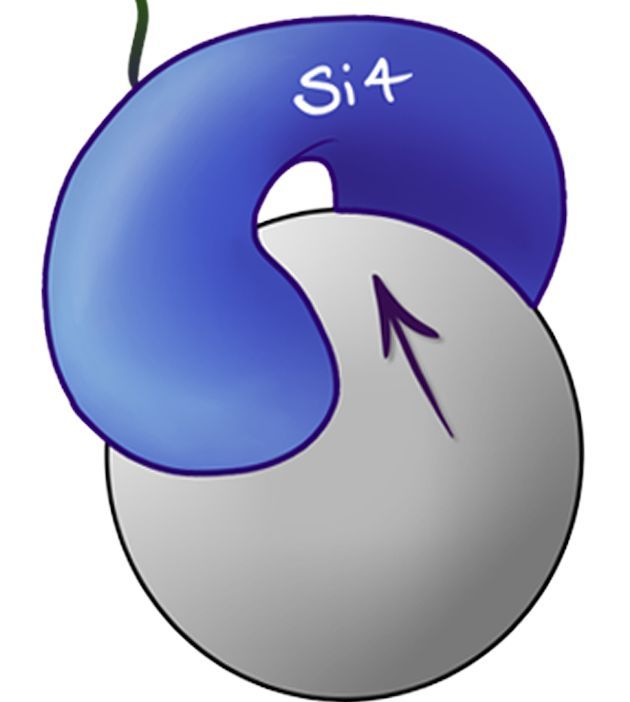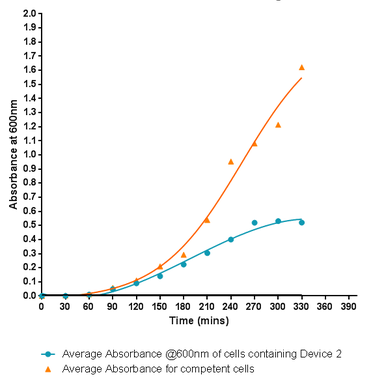Part:BBa_K1028001
INP.Si4 Silica Binding Complex
Introduction
This biobrick was designed utilise Ice Nucleation Protein to express the Si4 Binding Peptide on the extracellular surface of the plasma membrane of E.coli cells.

Fig.1 Illustrated schematic of the Si4 Binding Peptide binding presented on the C-terminus of INP as it bind with a silica microsphere.
Usage and Experimental Data
Growth Curve

Fig.1: Monitoring the growth rate of cells containing Si4 Binding Peptide attached to the C-terminus of INP, labelled here as Device 2, within the PSB1C3 standard iGEM submission plasmid. Although the graph shows a log and a lag phase for the cells containing the insert plasmid, the absorbance reached in log phase is very low compared to the control cells in fact showing the poorest growth of any of the Leeds 2013 submitted parts.
Fluorescent Activated Cell Sorting (FACS)

Fig.2: INP.Si4, labelled here as Device 2 which also contains GFP coding region under the control of the CpxR promoter, characterized using FACS. This data shows successful binding of a small portion of our expression cells to the silica beads used, this result is discussed in more depth below.
Device 2 contains our INP+Si4 construct, along with the Cpx and GFP genes. It was characterized using a flow cytometry method called Fluorescence-activated cell sorting (FACS) in solution with and without beads. The FACS images contain Side scattering and Forward scattering information, relating to relative size and density of the cells.
In the assay containing Device 2 with beads, there was an increase in the percentage of Population 3 (coloured in blue), from 0.1 to 2.2. This is suggestive of representing our Device 2 cells bound to silica beads. In contrast, the assay, which contained only Device 2 cells, had a very insignificant percentage of Population 3 (0.1%).
This suggests that our Device may successfully be binding to the silica beads utilizing the INP+Si4 construct, however not in all cases. This could either be due to not having enough time for the Device to binding to the silica, or that our Si4 binding domain is not as effective as it should be.
Sequence and Features
- 10COMPATIBLE WITH RFC[10]
- 12COMPATIBLE WITH RFC[12]
- 21COMPATIBLE WITH RFC[21]
- 23COMPATIBLE WITH RFC[23]
- 25INCOMPATIBLE WITH RFC[25]Illegal NgoMIV site found at 409
- 1000COMPATIBLE WITH RFC[1000]
| None |
